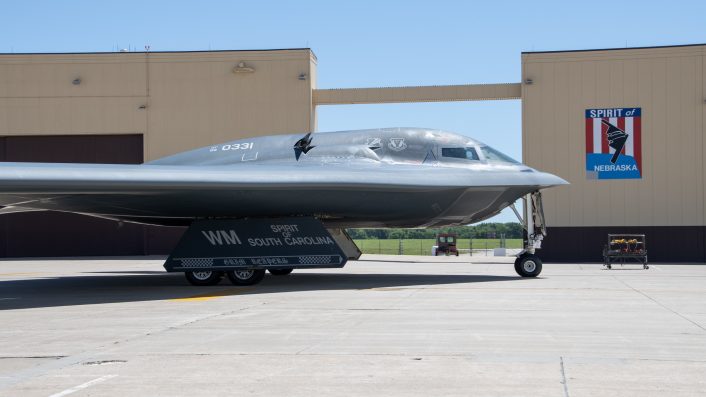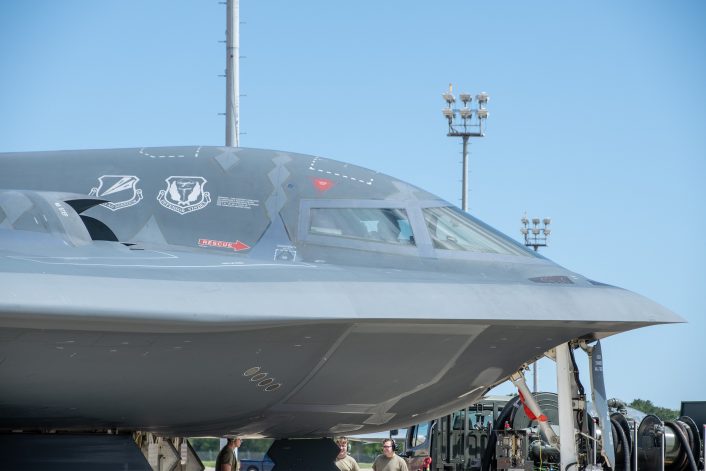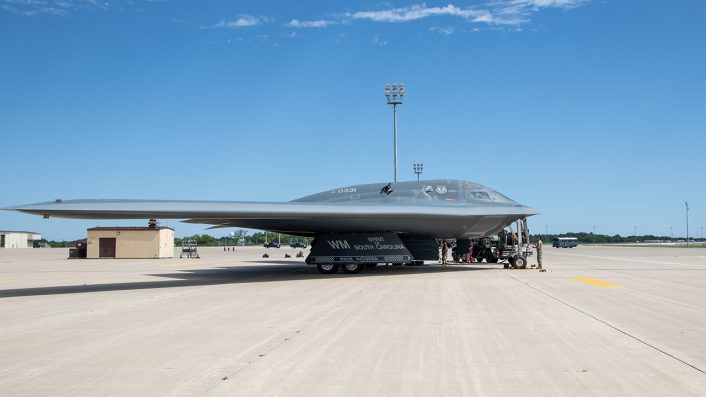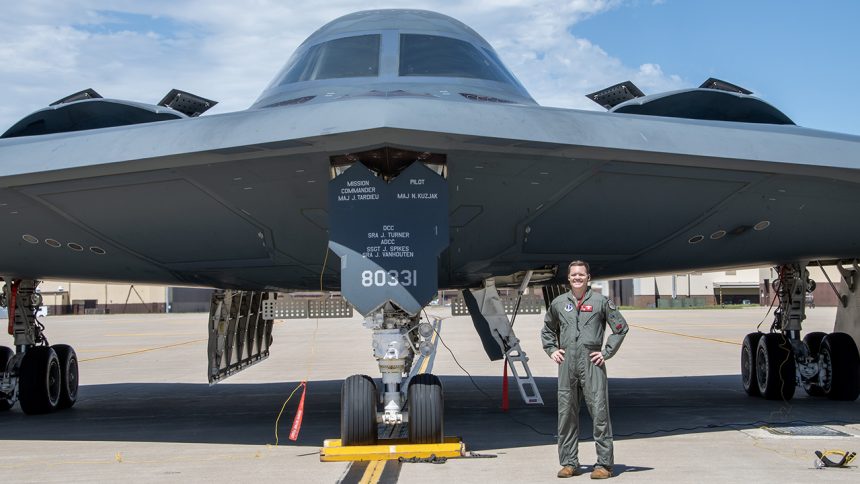In June 2024, Lt. Col. Justin Meyer became the first Air Force pilot to surpass 2,000 flight hours in the B-2 Spirit stealth bomber.
On Jun. 6, 2024, 110th Bomb Squadron Commander Lt. Col. Justin Meyer took off aboard a B-2 from Whiteman Air Force Base, Missouri, for a historical mission: during that sortie Meyer became the first Air Force pilot to reach 2,000 flight hours in the Spirit stealth bomber.
“It’s truly an honor to be the first Air Force pilot to hit 2,000 hours in the B-2,” Meyer said in a short statement published on Facebook by the 131st Bomb Wing. “I’ve really just focused my career on being a resident expert and chasing excellence, which led me to Weapons school and eventually the 110th Bomb Squadron, one of two combat bomb squadrons at Whiteman AFB. I’ve had so many incredible opportunities along the way which I have felt incredibly grateful and blessed to have experienced”

While some B-2 missions can extremely long and exceed the 24 hours of flight time, on average, each sortie lasts between 2 or 3 hours and this gives an idea of the number of times Meyer strapped in the cockpit of the iconic Spirit bomber.
The United States Air Force has a fleet of just 20 B-2 Spirit stealth bombers: of the 21 produced, one, #89-0127 “Spirit of Kansas”, belonging to the 393rd Bomb Squadron with the 509th Bomb Wing, was lost in 2008 on take off from Andersen Air Force Base, in Guam. Both crew members successfully ejected from the aircraft at low altitude. The B-2 hit the ground, tumbled and burned for a total loss worth about US$1.4 billion, reportedly, the most expensive crash in the history of the U.S. Air Force.
Spirit ##
The B-2 Spirit pilots are part of an elite community. Every B-2 pilot undergoes IQT (Initial Qualification Training) at Whiteman AFB, which includes extensive academic and simulator training before their first flight. After their first flight, each pilot is assigned a Spirit Number, marking their place in history (a tradition that began with the F-117 Nighthawk’s Bandit Numbers).
According to an article on the U.S. Air Force website, since the tradition started on July 17, 1989, only 550 pilots had received a Spirit Number until 2022. The first B-2 test pilots, Bruce Hinds and Col. Rick Couch, were assigned Spirit Numbers 1 and 2, respectively. The catalog also includes notable figures such as cabinet secretaries, senior military leaders, members of Congress, and award-winning enlisted members.
The Spirit Number fosters a deep sense of connection and pride among B-2 pilots, symbolizing their unique role and the immense responsibility of flying a powerful national asset.

B-2 at 35
The B-2 Spirit ushered in a new era of stealth technology and strategic deterrence 35 years ago with its maiden flight on July 17, 1989. While its replacement, the 6th generation bomber, the Northrop Grumman B-21 Raider, continues development and flight testing, Northrop Grumman, in partnership with the U.S. Air Force ensures the B-2 remains ahead of evolving threats, delivering new capabilities to maintain strategic deterrence.
A significant milestone was recently achieved with the B-2 program with the introduction of Spirit Realm 1 (SR 1). This first fieldable, agile integrated functional capability offers mission-critical upgrades to the bomber’s communications and weapons systems via an open mission systems architecture, enhancing combat capability and enabling a new phase of agile software releases.

Through the software factory development ecosystem, SR 1 was rapidly fielded with zero software defects, significantly boosting the B-2 fleet’s mission effectiveness. SR 1 includes new displays, flight hardware, and updates that improve the B-2’s survivability. The successful integration of Spirit Realm led the B-2 to become the first legacy nuclear platform to use the Department of Defense’s DevSecOps processes and digital tools.
The Spirit Realm software factory, established with Air Force Global Strike Command and the B-2 Systems Program Office, leverages integrated digital tools to design, manage, build, and test B-2 software more efficiently. These tools link with other legacy systems to enable rapid testing and fielding, identifying and mitigating potential risks earlier in the development process. Agile software development capabilities were demonstrated by rapidly deploying updates to the integrated test facility, where they were verified and loaded onto the aircraft.









